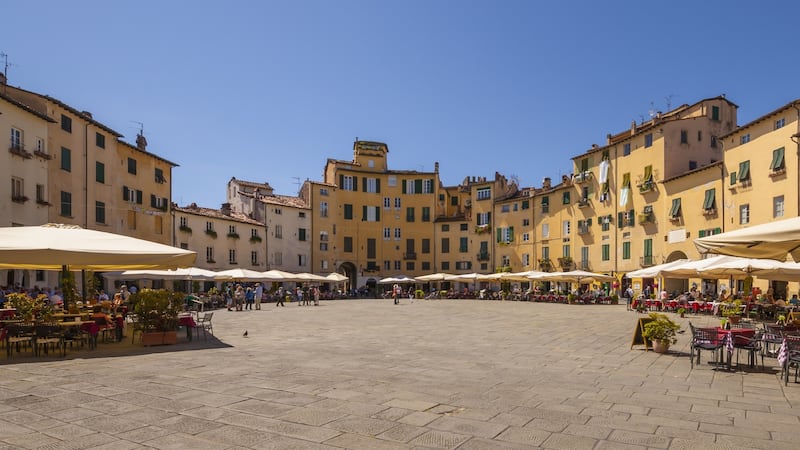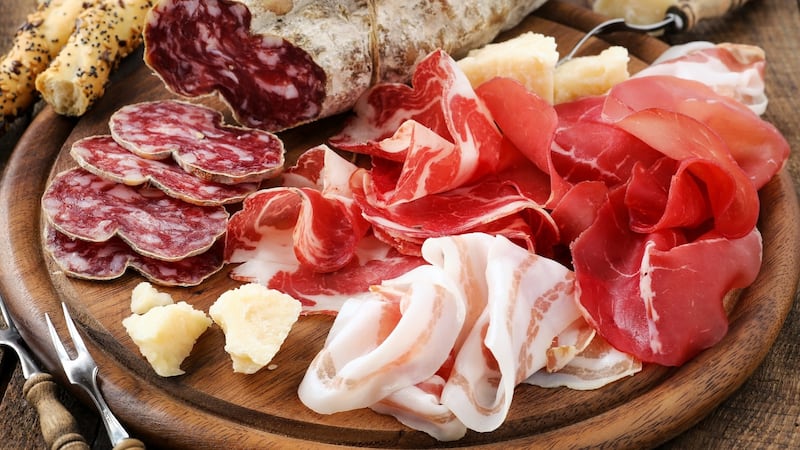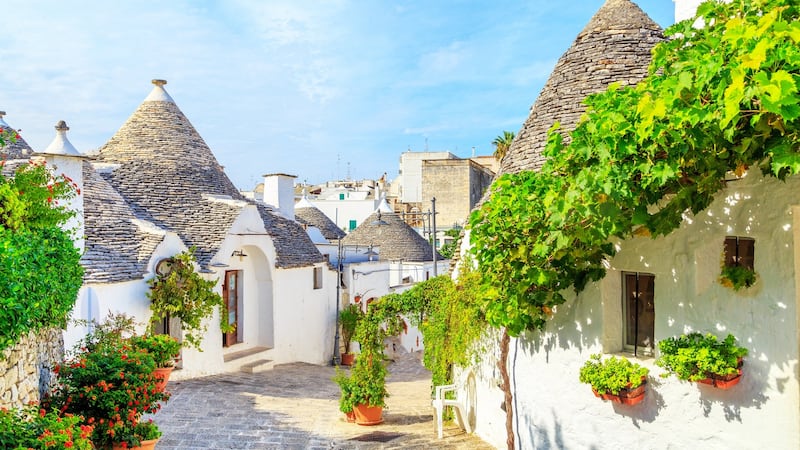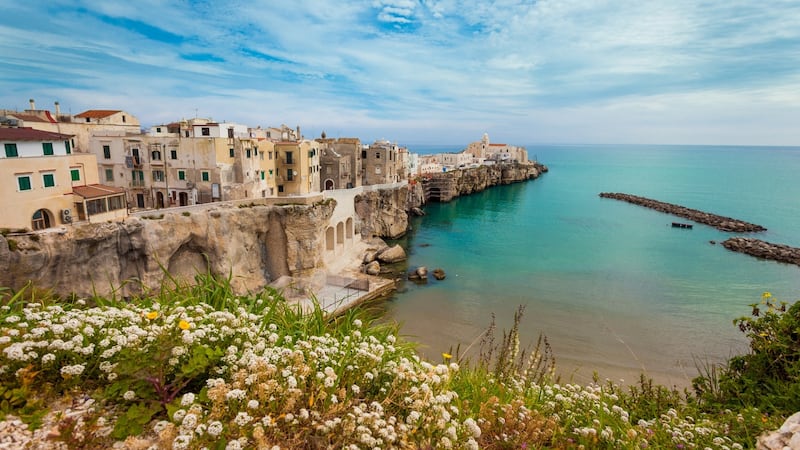An abundance of great art, historic monuments, stunning locations and some of the best food you'll eat anywhere: is it any wonder that Italy is one of the world's most popular holiday destinations? The country has been virtually synonymous with holidays since the days of the 18th-century Grand Tour, when moneyed Europeans would soak up the culture, bathe in its waters and surrender to every indulgence.
Put simply, Italy knows how to do tourism. And while the cost of living is comparatively lower in Italy than in Ireland, the cost of an Italian holiday can quickly spiral, especially if you’re travelling with the whole family.
But if you’d like to get the most of Italy without blowing your budget, here’s how.

Which are the less expensive regions?
The rule of thumb is the further south you go, the less expensive everything gets – including accommodation, meals and everyday living. For instance, the northern lakes of Maggiore, Como or Garda are more expensive than Lake Trasimeno in Umbria. Equally, a room in a three-star hotel in Naples will cost less than its Milanese equivalent.
However, demand is an additional factor, so you'll get more for your euro in western Sicily than the east coast, where towns like Taormina are among the most popular seaside destinations in Italy.
Thanks to low-cost airlines like Ryanair, the Italian deep south has become an increasingly popular alternative to the traditional powerhouses of Tuscany, Lombardy and Emilia-Romagna.
If you're set on a specific part of the country, you might consider alternative destinations to the most popular ones. You don't have to stay in Florence to enjoy it: the cradle of the Renaissance is only a short distance away from Lucca, whose cobbled streets, elegant piazzas and handsome palazzi are fine example of Renaissance style, but without the crowds. Equally, you can avoid the overwhelming bustle of Venice by basing yourself on one of the outlying islands. Only 10 minutes by water bus from the city, Murano is close enough to be convenient but far enough away to afford a little bit of peace.
Can I eat well without spending heavily?
The good news is that not only is it difficult to eat badly in Italy but, on the whole, dining out is considerably cheaper there than it is at home. Which isn’t to say that you can’t splurge on a meal – fine dining in the top spots of Milan or Venice will put a dent in your budget – but these are the exceptions to the rule.
The Italian trattoria is the bedrock of good, informal dining countrywide. The best of them are rarely found in the heart of the tourist areas but are well worth seeking out for the quality of the food and the cost – even an Italian gourmand would blanche at paying any more than €10 for a plate of pasta. The best way to find them is to ask locally: everyone has their favourite place to go, and the very best of them are often located in the most unremarkable neighbourhoods, or even outside the town altogether.

Another good option, especially in bigger cities, is the happy hour aperitivo. For the price of a single drink you can pillage a pretty tasty buffet of antipasti, cold meats and pasta salads; in Venice, it’s known as the giro di ombre, where unassuming backstreet osterie serve up cicheti (tapas-style snacks) along with half-glasses of wine – always a better option than paying over the odds for indifferent cuisine in a restaurant whose menu comes in 10 languages and is full of tourists.
The cheapest option, of course, is to cook the food yourself, which makes sense if you’ve opted for self-catering accommodation. Italian supermarkets are cheap, and the quality of fresh produce is usually very good – the perfect opportunity to perfect your spaghetti al pomodoro.
What about accommodation?
The self-catering option is by far the best way to keep your budget down. Airbnb is a major player in the main tourist centres, where it seems every second palazzo is divided up into apartments, from pokey studios to multi-roomed family dwellings.
Accommodation rates can fluctuate wildly according to the season. Easter, summer and Christmas/New Year can see major price hikes, but location also has a bearing on seasonality. While you’ll pay maximum for a room in a popular coastal resort in August, it might be low season in the city, where locals have fled the heat for the beach. The exceptions are Venice and Florence, where the parched summer heat barely puts a dent in visitor numbers and you’ll pay high-season prices from Easter to roughly the beginning of September.
Another increasingly popular choice is farm stays, or agriturismo, where not only do you stay on a working farm, but you benefit from all the good food that farm produces. Agriturismo agencies worth checking out include agriturismo.it, agriturismo-italia.net, and agriturismovero.com.

It’s also worth investigating some of Italy’s more offbeat accommodation choices, especially in the south where costs are much lower. In southern Puglia, the whitewashed, conical trulli have become a popular choice, while in neighbouring Basilicata – traditionally one of Italy’s poorest regions – the Unesco World Heritage-listed town of Matera has seen many of its sassi, or cave dwellings, converted into boutique hotels. In most cases, trulli and sassi come with pools.
What about public transport?
The comprehensive rail network connects virtually every town and village in the country, with almost all stations conveniently located in the centre. The train service itself is well run and comparatively less expensive than other European countries, especially local and regional trains run by Trenitalia (trenitalia.com), Italy's national operator. Inter-city trains are faster and make fewer stops but are more expensive.
Trenitalia also operates high-speed trains – frecciarossa, frecciargento and frecciabianca (red, silver, and white arrow) – as does private company Italo (italotreno.it) with most of the main cities connected and travel times often less than half those of regular trains. Fares are considerably more expensive, but the two services operate a healthy competition and plenty of discounted fares are available, especially if you book well in advance.
What are the car-hire deals and pitfalls?
Rates can vary wildly, but online booking agencies such as Rental Cars (rentalcars.com) will compare the rates offered by most rental companies.
The big firms such as Hertz, Avis, Budget and Europcar are well represented throughout Italy, but it's also worth checking out local companies such as Locauto (locautorent.com), Leasys (leasysrent.it) and Sicily By Car (sicilybycar.it, which, despite the name, is countrywide), who often have rates cheaper than the bigger international firms.
When picking up your car, be sure to examine it carefully for existing damage, including minor dents and scratches. Take photographs if necessary so that in the event of any additional damage you won’t be charged for what you didn’t do. Remember that Collision Damage Waiver is mandatory for all rentals. Rental companies will often try to sell you no-excess (total) cover at a premium, but you can also purchase your own from a third-party insurer. When handing back the car, make sure to get a receipt for the whole cost of the rental.
It’s worth bearing in mind that rental cars are of limited use in cities. Not only can traffic be a nightmare, but many cities (notably Florence and Rome) operate limited traffic zones – areas of the centre that are off-limits to unauthorised vehicles and are closely monitored by CCTV, and if you don’t have the right permit you’ll get a fine.

Any scams I should look out for?
The cardinal rule with all travel is that if it sounds too good to be true, it usually is.
In Italy, scams to look out for are peddlers selling luxury watches, the offer of good tailoring, or a fast-track ticket so you can jump the queue at a major attraction. Street markets are incredibly popular, but you’ll struggle to find quality merchandise amid the knockoffs and faux leather being sold as the real thing.
Pick-pocketing is another problem, especially around busy sights, when you might be accosted by children, while one of their older friends approaches from behind and goes for your wallet or bag.
What’s free or discounted?
EU citizens under 18 get in free to all of Italy’s state museums and sites (under 25s get discounted entry), which are also free to all on the first Sunday of every month from Easter to October and during National Museum Week at the beginning of March.
Most cities operate a discount pass: in Florence, the Firenze Card (€85; firenzecard.it) is valid for 72 hours and covers admission to more than 70 museums and other sights throughout the city; in Venice it's the Venezia Unica City Pass (€39.90;veneziaunica.it); Milan's Civic Museum Card (€12; turismo.milano.it) is a three-day ticket for entrance to the city's nine civic museums.
In Rome you have the choice between the Roma Pass (€38.50), which grants entry to two sites, reduced ticket admission to others and unlimited free public transport, and the Omnia Card (€113), which grants fast-track entry to the Vatican and St Peter's, as well as free public transport and a host of other discount deals on museums.
Any other tips to keep my costs down?
Stand in cafes rather than sit, as you’ll pay up to double just for the privilege of sipping your cappuccino at a table. Avoid any cafe or restaurant that has a view of a major sight or monument. Sure, the views are nice but these are generally tourist traps with mediocre fare. In fact, steer clear of any place that has a tourist menu or an eager waiter standing outside hustling for business.
Whatever chance you have of a dud meal in Italy, it’ll be in those places where the laminated menu is in 10 languages and there’s a convenient picture of the food.










